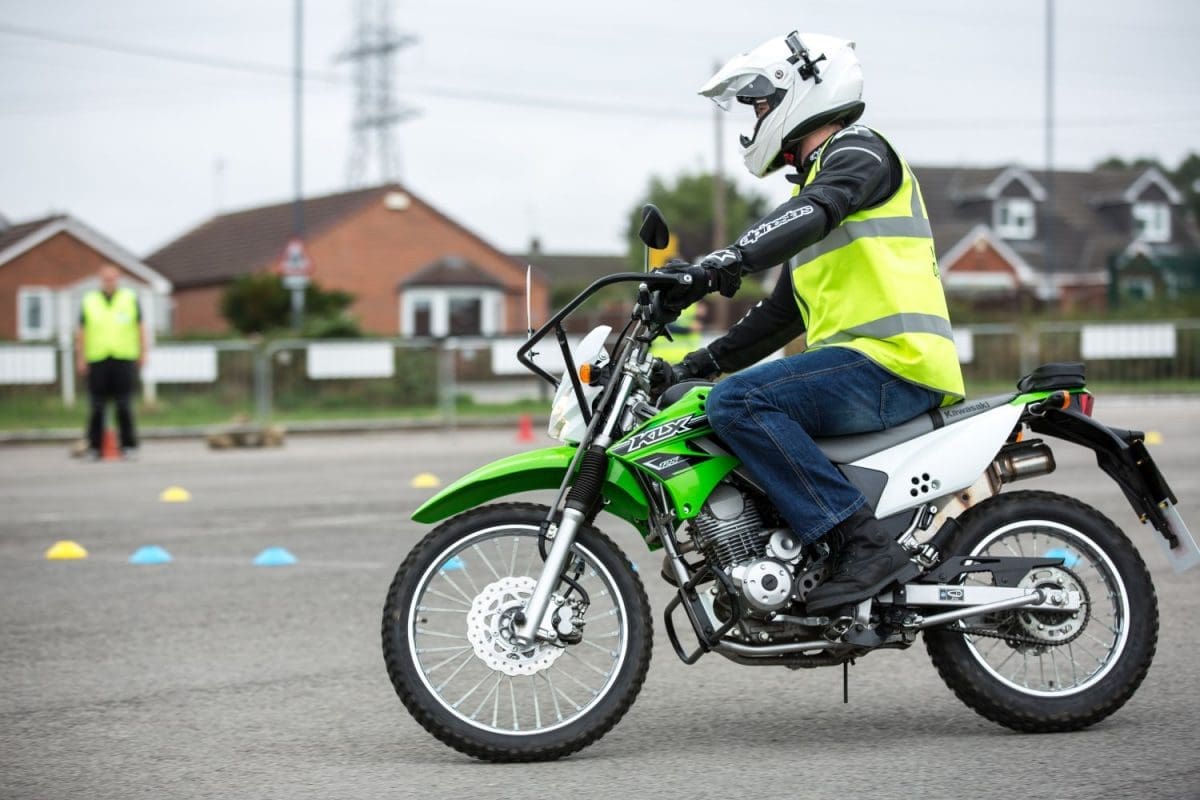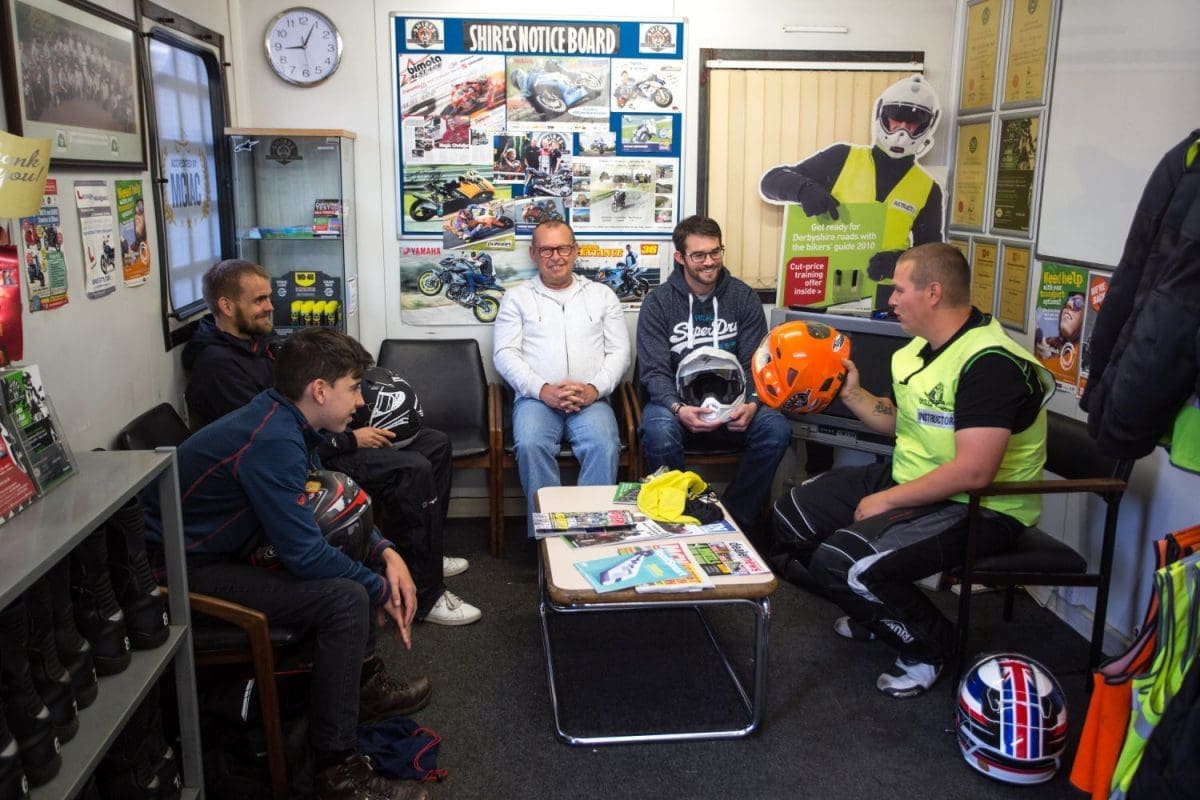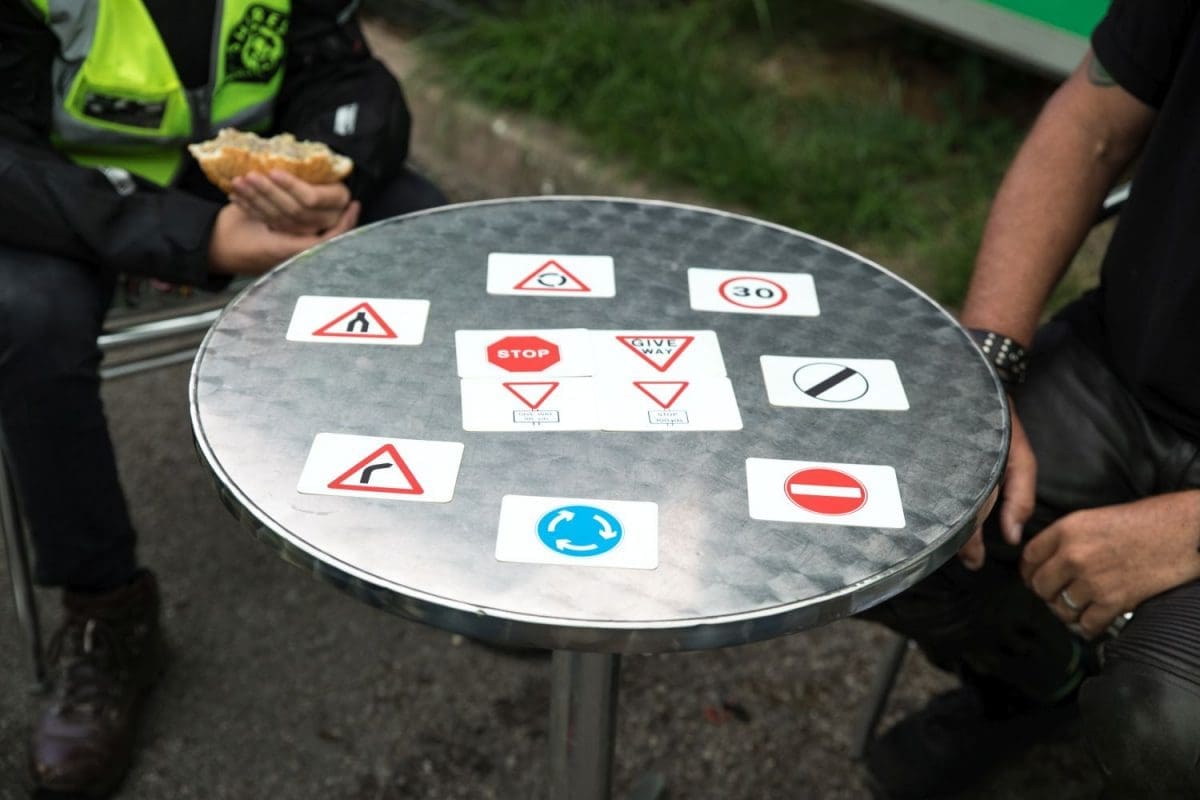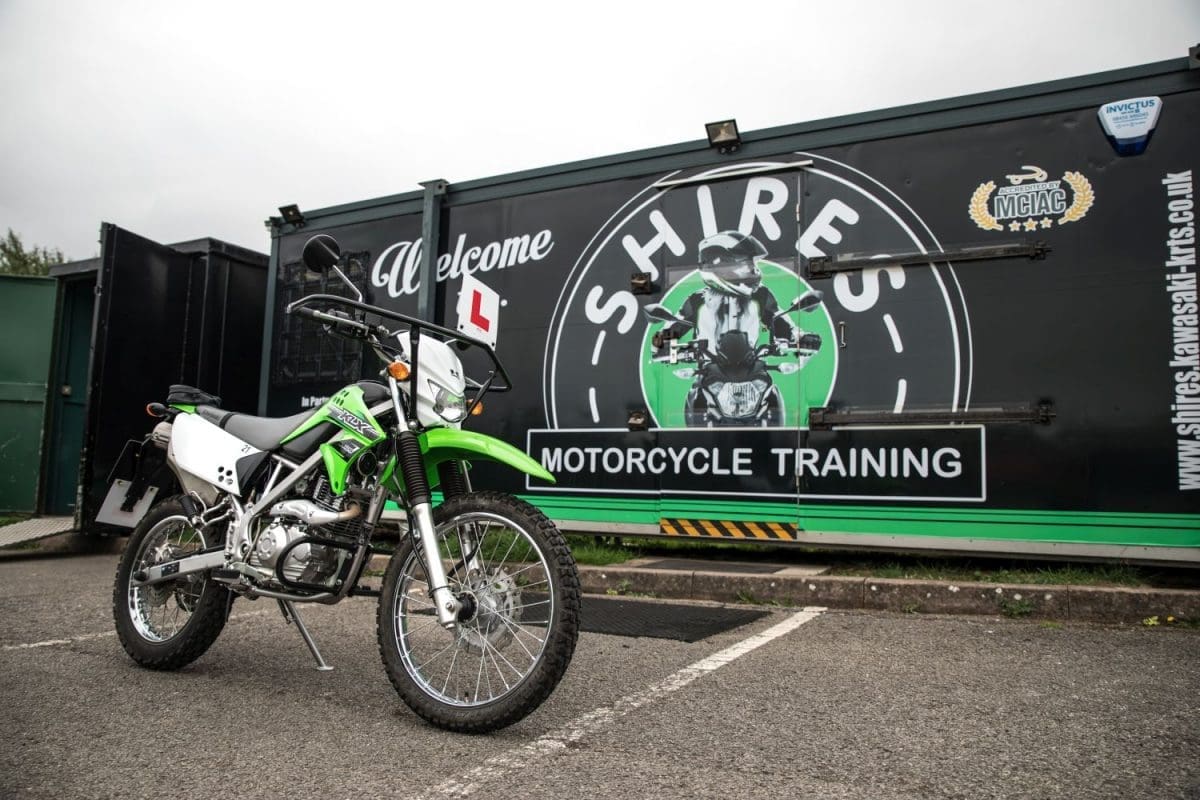Thinking about getting on two wheels? The first step is to get booked in for a CBT and gain some experience on a small bike.

THE FIRST STEP – CBT
Ok, so you’ve decided you’d like to ride a motorcycle. The first step is to complete your Compulsory Basic Training. Don’t think of it as a test – because it’s not. The CBT course is simply designed to introduce new riders to five ‘elements’ that’ll help make their riding safer and more enjoyable. You can either choose to do the CBT course as a ‘standalone’ activity or treat it as a precursor to a longer, more intensive Direct Access Course.
WHAT’S INVOLVED
ELEMENT A
After a basic eyesight check, you’ll be heading into the classroom for Element A. Your instructor will take the time to discuss the benefits of protective motorcycle gear. You’ll learn about motorcycle helmets (including which visors you can and can’t use), the different jackets that are available and the options for choosing gloves, trousers, boots and reflective or high visibility clothing.

ELEMENT B
Element B is all about getting to grips with the motorcycle (or scooter) you’re going to be riding. The instructor will explain the controls, and let you familiarise yourself with them before coaching you on how to put a machine on-and-off its stand – before running through the starting procedure. Fuel, ignition, gears and then start.

ELEMENT C
Element C is all about learning new ‘motor skills’ under the watchful eye of the instructor, in a safe, off-road environment. In essence the instructor will explain and then demonstrate a range of skills, before offering the chance for you have a go yourself. Here’s a quick breakdown of what you’ll learn:
– Using the brakes
– Riding in a straight line and stopping
– Riding the machine slowly, in a controlled manner
– Riding in a large oval
– Riding in a figure of eight
– Changing gears (if you’re on a geared machine)
– Emergency stop
– Turning right and left with a rear ‘lifesaver’ observation
– Performing a U turn
As we’ve said – the CBT is training not a test, which means that your instructor won’t introduce any new skills until they’re comfortable you’ve mastered the last one.

ELEMENT D
Element D is an informal question and answer session predominantly focused on road safety – to ensure you’re ready to get out on the road for the final part of the CBT. During the session your instructor will discuss road positioning, observation and hazard perception, legal requirements, careful use of speed – in addition to being a vulnerable road.

ELEMENT E
The final part of the day takes place out on the open road. You will ride local roads, practicing the skills you’ve learned throughout the day. More specifically, you’ll be expected to complete hill starts, emergency stops and U turns under the watchful eye of your instructor, before building up to busier roads as the ride progresses. When your instructor is satisfied that you have shown you’re safe out on the road, it’s back to the training school for a cup of tea and a final evaluation.

I’VE DONE IT!
So, you’ve completed your CBT – and your instructor reckons you’re competent enough to stay safe out on the tarmac. Congratulations! You’ll be awarded with a DL196 (a CBT pass certificate) – and sent on your way to practice what you have been taught. But don’t forget, CBT holders are restricted from riding on motorways and carrying pillions. On the off chance that you’ve not got on so well, don’t worry – it’s just you may need some more training. You’ll have to book in another day – and do the full course again.

THE BIKE – KAWASAKI KLX125 (2017)
The bike Justin used for his CBT was a compact little Kawasaki KLX125 dual sport machine. Perfect for learners because of its lightweight nature, authoritative riding position and smooth power delivery – the KLX125 is well worth a onceover if you’re looking at getting your hands on a reliable, tried and tested machine once you pass your CBT.

TECHNICAL SPECIFICATIONS
Kawasaki KLX125 (2017)
ENGINE: 125cc single cylinder, four-stroke
POWER: 10.30bhp @ 8000rpm
TORQUE: 7.4lb-ft @ 6400rpm
SUSPENSION: (F) 33mm telescopic fork with 175mm travel (R) Uni-Trak with 180mm travel
BRAKES: (F) Single 240mm petal disc with twin-piston caliper (R) Single 190mm petal disc with single-piston caliper
TYRES: (F) 70/100-19 (R) 90/100-16
WEIGHT: 113kg
SEAT HEIGHT: 830mm
FUEL CAPACITY: 7 litres


